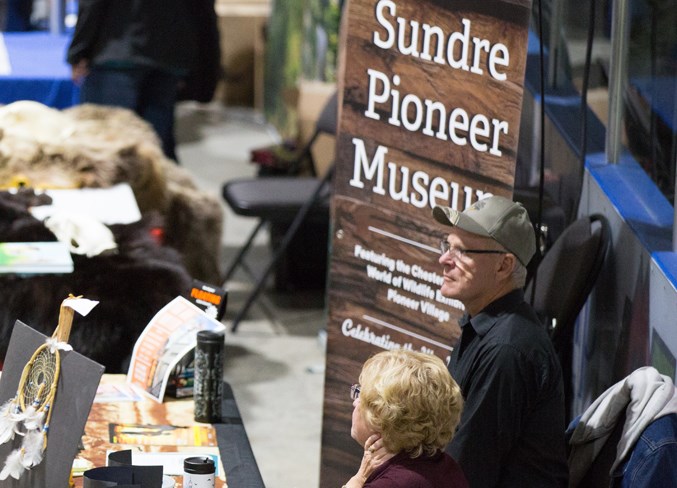Supporters of the Sundre Pioneer Museum are celebrating a 50-year milestone in part, by looking ahead to the next half century.
An anniversary celebration was held Saturday, Sept. 15 at the museum, giving hommage to those who created the society and the successes achieved to date.
“We have something to be very, very proud of in what our past has given us -- the barn, the school, the reception area, the Chester Mjolsness World of Wildlife exhibit -- and I can’t wait for what’s next,” said Bruce Temple, the acting board chair of the Sundre & District Museum Society prior to the event.
The celebration event marked the start of a collection drive for Temple’s brainchild -- a time capsule intended to be buried next year and reopened 50 years from then.
It also served as the first opportunity for the public to weigh in on the future of the museum.
Attendees were encouraged to jot down their thoughts on short- and long-term goals identified by the society.
Topics included determining storage requirements, programming as well as exactly what the museum will collect, display or possibly restore.
Museum director Jamie Marr said the collecting mandate is currently from pioneer times up to 1960.
“I say that tongue in cheek because that’s a blatant lie,” she said laughing.
Take the 275-pound foil ball donated by a former resident of the Olds lodge, now proudly on display, she said.
Or the reels, projector and screen from the last movie theatre ever to have existed in Sundre.
“They’re post-1960,” she said.
Artifacts for the museum were first collected from pioneer fairs held in Sundre in 1969, 1970, 1971 and 1973.
On April 28, 1968, a group of people met at the Eskrick family home to discuss their concerns about so many artifacts belonging to previous generations that were being destroyed or lost.
It was decided to form a society dedicated to the “preservation of historical data and artifacts of our community.” The application was signed by eight people on June 27, 1968, and the Certificate of Incorporation was dated July 2, 1968 under the name of Sundre & District Historical Society.
“A great many phone calls were made requesting that people bring in their old-time articles and perhaps help with demonstrations,” states the historical background on the society.
When the museum outgrew its space in the barn on the site, a new building was commissioned to display the many pioneer items previously held in storage. The Niels Eskesen Reception Centre was constructed in 2007 and thus named after a cherished volunteer and board member who died during its construction.
Several historic buildings have since been moved onto the site, including the Bergen School, Pioneer Cabin, The Ferryman's House, and the old Red Deer Ranger Station. As well, the Chester Mjolsness World of Wildlife exhibit has helped attract people from around the world.
Once located beside a thrift shop, there are also many items currently in storage that post-date the maximum year cut-off.
Being a museum, “nothing gets thrown away,” said Marr.
The society is about to embark on an inventory of all items at the museum, one of the recommendations made by the Canadian Conservation Institute after a recent audit.
Expected to take about five years, inventory-taking will help sort out items in storage that can be repurposed or put on display.
“If we’ve got 10 boots we want to know whose boots they are; what’s the story behind them?” Marr said.
The public will be invited in to peruse the items before decisions are made on what to keep or display.
The public is also invited to submit items for a time capsule the society anticipates burying next year.
“This is going to be exciting,” said Marr. “If people have something they want to put in that will be looked at 50 years from now and want their stuff.”
She added she hopes the municipality and community organizations like churches, the RCMP, hospital or groups like search and rescue take part.
“Everything we do is for the community. Community involvement is what drives us,” she said.
There are currently about 100 members of the society with between 30 and 40 per cent active in operations.



